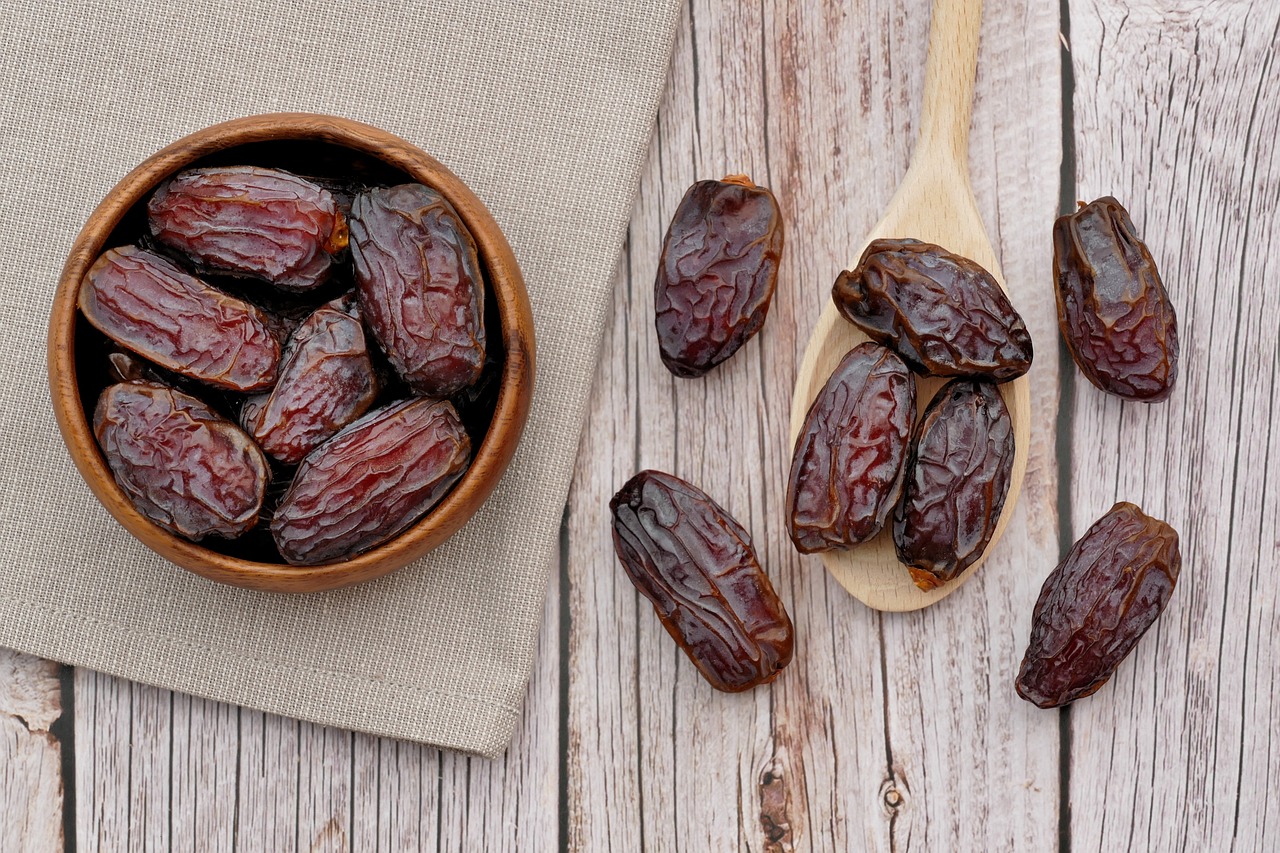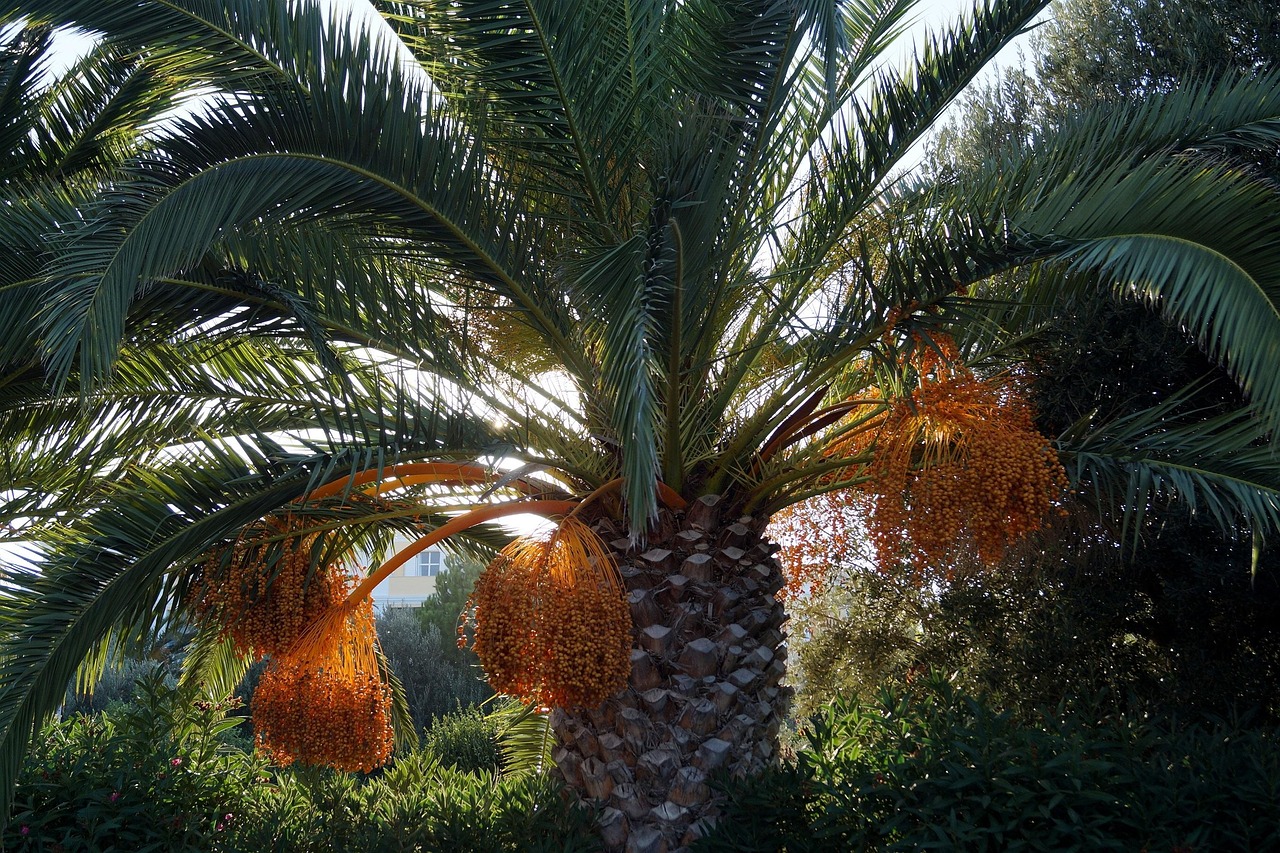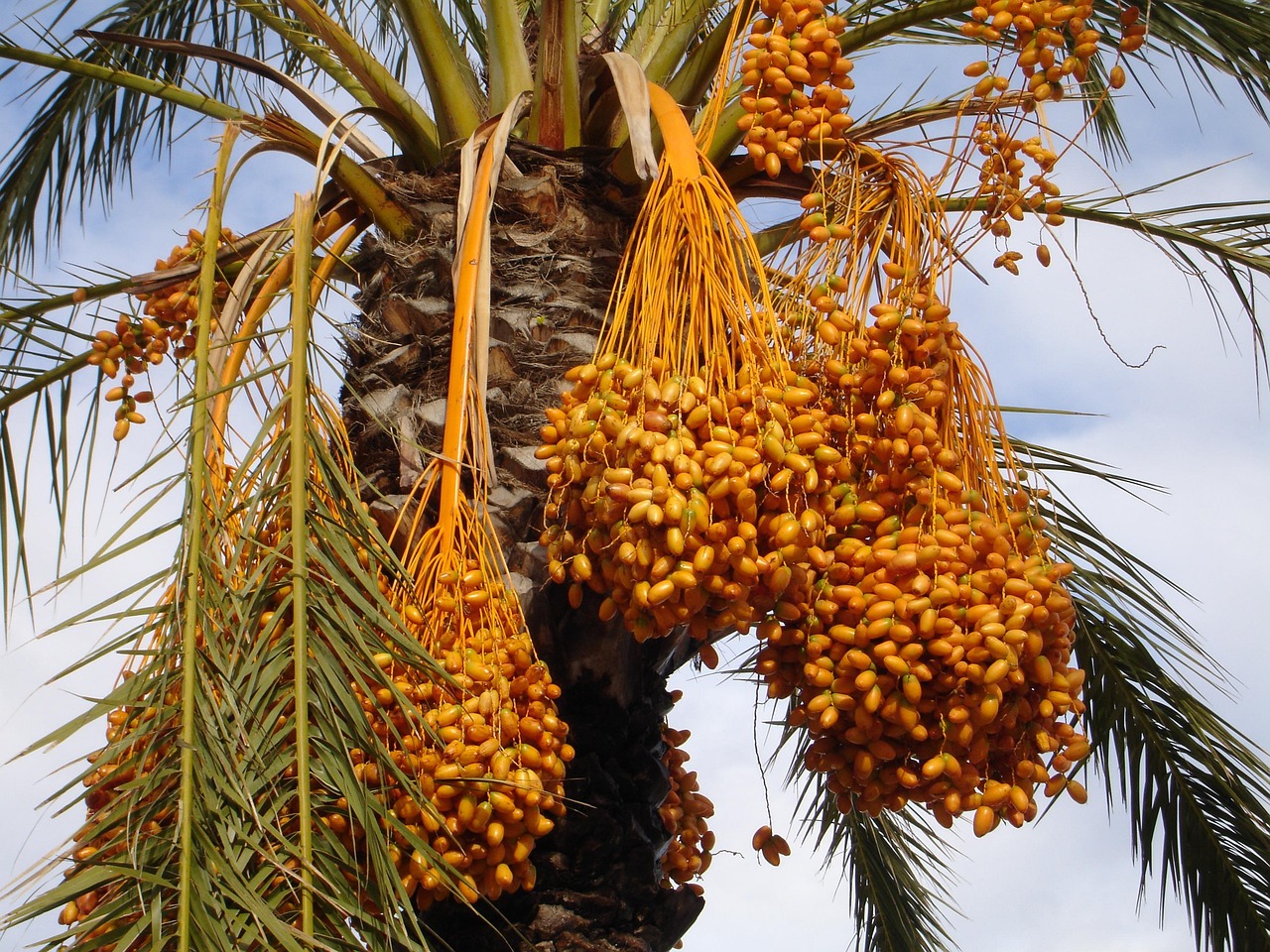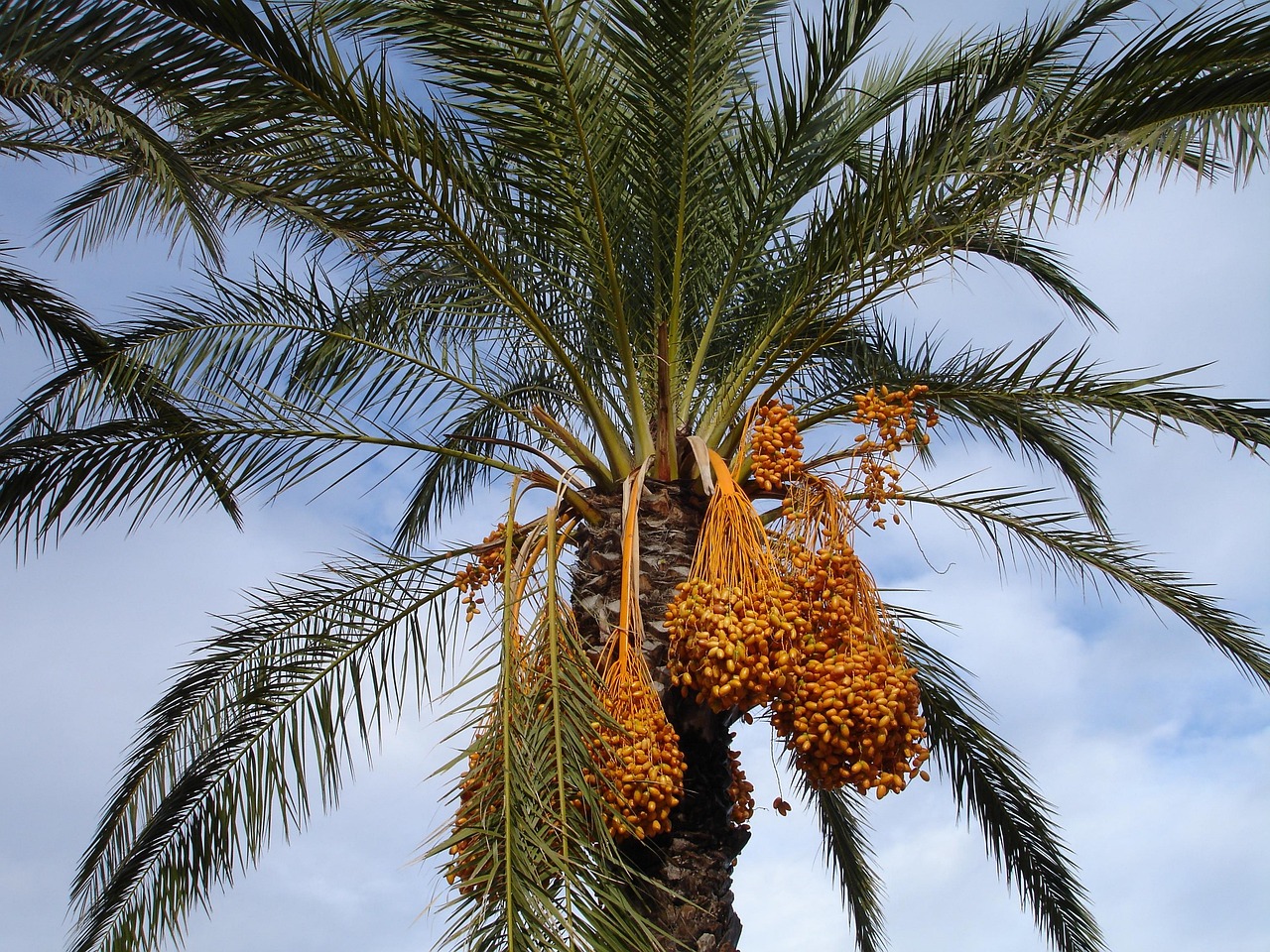Proper pruning is vital for maintaining healthy date palm trees, maximizing fruit yield, and preventing pests and diseases. This guide covers the best timing, tools, techniques, and post-care practices to ensure your date palms thrive. Implementing these tips will promote robust growth and long-term productivity of your trees.
Date palms are not only a source of delicious fruit but also a significant part of many cultures and economies, especially in arid regions. These trees thrive in warm climates and can live for over a century, making proper care essential for their longevity and productivity. Pruning is a crucial aspect of this care, as it directly impacts the tree’s health and fruit yield.

The primary goal of pruning date palms is to maintain their structure and health. Proper pruning techniques can help in the following ways:
- Removes dead or dying fronds that can harbor pests.
- Encourages fresh growth by allowing sunlight to reach the inner parts of the tree.
- Improves airflow, reducing the risk of fungal diseases.
- Enhances the overall aesthetic of the tree.
Understanding Date Palm Growth
Before diving into pruning techniques, it is important to understand how date palms grow. They develop a crown of leaves called fronds, which can reach lengths of up to 18 feet. Each year, fronds die off and need to be removed to make way for new growth. This cycle is essential for maximizing the tree’s health and fruit production.
Date palms typically grow in a single trunk form, which can reach heights of up to 75 feet. The fronds emerge from the top of the trunk, creating a beautiful canopy. Understanding the growth cycle helps in determining when and how to prune effectively.

Pro-Tips: Lessons from My Personal Experience
- When I first started pruning, I tried to remove as many fronds as possible at once, thinking it would help the tree breathe better. I quickly learned that over-pruning stressed the tree and reduced fruit yield. Now, I only remove about one-third of the fronds at a time and do so gradually over multiple sessions.
- Initially, I used dull pruning tools, which caused jagged cuts and increased the risk of disease entry. After sharpening my tools and keeping them clean, I noticed faster healing and healthier trees.
- At first, I pruned during the summer, not realizing that pruning in dormancy causes less stress and lower disease risk. I now schedule pruning in late winter or early spring to give the tree the best chance to recover before new growth starts.
- I used to ignore small pests and signs of disease, thinking they weren’t serious. Experience taught me to inspect my palms regularly and address small issues early, saving me from bigger problems later.
- When I tried to harvest dates by knocking the whole cluster off, I damaged the fruit and the tree. Now, I carefully pick ripe dates by hand or use gentle shaking techniques to preserve both the fruit and the plant’s health.
- I’ve learned that neglecting post-pruning watering and fertilization hampers recovery. Now, I make sure to water adequately and apply balanced fertilizer after pruning to promote strong new growth.
- Initially, I underestimated the importance of proper storage. Drying and storing dates in cool, dark places extend their shelf life and maintain quality much better than leaving them at room temperature.
- Over time, I’ve realized that early detection of pests and diseases through regular inspections saves a lot of trouble. Establishing a routine monitoring schedule has been one of my best practices for maintaining healthy palms.
When to Prune Date Palms
Timing is crucial when it comes to pruning date palms. The best time to prune is typically in late winter or early spring before new growth begins. During this period, trees are still dormant, allowing for less stress on the plant. Pruning during the growing season can lead to sap loss and increase the risk of disease.
It is also important to observe the tree’s health before deciding to prune. If there are signs of disease or pest infestation, immediate action may be necessary. Regular inspections can help identify any issues early on.
Essential Pruning Tools
Having the right tools is essential for effective pruning. Here are some commonly used tools:

| Tool | Purpose |
|---|---|
| Pruning Shears | For cutting smaller fronds and trimming small branches. |
| Loppers | For cutting larger fronds that are too thick for shears. |
| Saw | For removing large, dead fronds or branches. |
| Gloves | To protect hands from sharp edges and thorns. |
| Safety Glasses | To protect eyes from falling debris. |
Using the right tools ensures that pruning is efficient and safe. Always maintain your tools by keeping them sharp and clean to promote healthy cuts and reduce the risk of disease transmission.
Pruning Techniques for Date Palms
There are several techniques to consider when pruning date palms. Understanding these methods will help ensure that your trees remain healthy and productive:
- Remove Dead Fronds: Start by cutting away any dead or yellowing fronds. This allows for better light penetration and air circulation.
- Avoid Over-Pruning: Only remove one-third of the fronds at a time. Excessive pruning can stress the tree and hinder its growth.
- Cut at the Base: When removing fronds, cut as close to the trunk as possible without injuring it. This prevents disease entry points.
- Inspect for Pests: While pruning, look for any signs of pests or diseases. Address these issues immediately to avoid spreading.
By following these techniques, you can ensure that your date palms remain healthy and continue to produce fruit for generations to come. Understanding when to prune, what tools to use, and how to execute proper techniques will set you on the path to successful date palm cultivation.

Post-Pruning Care for Date Palms
After pruning date palms, it is important to provide the right care to help the tree recover and thrive. Proper post-pruning care can significantly enhance the tree’s health and productivity. Here are some essential steps to follow:
- Watering: Ensure the tree receives adequate water after pruning. This helps to support new growth and reduce stress.
- Fertilization: Applying a balanced fertilizer can provide essential nutrients. Fertilizing after pruning encourages new frond development.
- Mulching: A layer of mulch around the base of the tree can help retain moisture and suppress weeds.
Fertilization Techniques for Date Palms
Fertilization is vital for the overall health of date palms. It ensures that the trees have the necessary nutrients to grow strong and produce fruit. Here are some important aspects of fertilization:
Types of Fertilizers
There are several types of fertilizers available for date palms. These include:
- Organic Fertilizers: Options such as compost and manure improve soil health and provide slow-release nutrients.
- Inorganic Fertilizers: Chemical fertilizers offer immediate nutrient availability and can be tailored to specific deficiencies.
When to Fertilize
The best time to fertilize date palms is in early spring, just after pruning, when new growth starts to emerge. A second application can be made in late summer to support ongoing growth. Timing is crucial for maximizing nutrient uptake.
Application Rates
The amount of fertilizer required depends on the age and size of the tree. Generally, younger trees need less fertilizer than mature ones. Here’s a simple guideline:
| Tree Age | Fertilizer Amount (per application) |
|---|---|
| 1-3 years | 1-2 pounds |
| 4-6 years | 2-4 pounds |
| 7+ years | 4-6 pounds |
Pest Management in Date Palms
Pest management is an integral part of maintaining healthy date palms. Various pests can threaten the health of the tree, especially after pruning when the tree is vulnerable. Here are common pests to watch for:
- Date Palm Weevil: This pest bores into the trunk, causing damage that can lead to tree decline.
- Red Palm Weevil: Similar to the date palm weevil, it attacks the crown and can cause significant damage.
- Aphids: These tiny insects suck sap from the fronds, leading to yellowing and stunted growth.
Pest Control Methods
Preventive measures and control methods are essential to keep pests at bay:
- Cultural Practices: Regularly inspect trees for signs of pests and remove any infested fronds promptly.
- Pesticides: Use appropriate pesticides when pest populations exceed threshold levels. Always follow label instructions for safe application.
- Natural Predators: Encourage beneficial insects like ladybugs that feed on aphids and other pests.
Disease Management in Date Palms
Date palms are susceptible to various diseases that can affect their health and productivity. Recognizing symptoms and managing these diseases is crucial for maintaining healthy trees.
Common Diseases
A few common diseases that affect date palms include:
- Leaf Spot: Caused by fungal infections, it leads to brown spots on fronds.
- Crown Rot: A serious condition caused by overwatering or poor drainage, leading to decay at the base of the fronds.
- Fusarium Wilt: A soil-borne fungus that causes yellowing leaves and wilting.
Disease Prevention Strategies
Implementing disease prevention strategies can help protect your date palms:
- Avoid Overwatering: Ensure proper drainage to prevent waterlogging, which encourages root rot.
- Sanitize Tools: Clean all pruning tools before and after use to prevent disease spread.
- Choose Resistant Varieties: When planting new date palms, select varieties known for resistance to common diseases.
By focusing on these aspects of post-pruning care, fertilization, pest management, and disease control, you can create an environment that fosters robust growth and fruitful harvests from your date palms. Proper maintenance will ensure that your trees thrive for many years to come.
Harvesting Date Palms
Harvesting date palms is a crucial aspect of the cultivation process. Understanding the optimal time for harvesting and the methods involved can greatly impact the quality and yield of the fruit. Dates are typically harvested when they are fully ripe, which varies depending on the variety and climate conditions.
Signs of Ripe Dates
It is essential to recognize when dates are ripe for harvesting. Here are some key indicators:
- Color Change: Ripe dates usually change color from green to yellow, red, or brown, depending on the variety.
- Soft Texture: The fruit becomes softer to the touch as it ripens. This indicates that it is ready for harvesting.
- Sweet Aroma: A sweet smell often accompanies ripeness, signaling that the dates are ready to be picked.
Harvesting Techniques
Proper harvesting techniques ensure minimal damage to both the fruit and the tree. Here are some methods to consider:
- Hand Harvesting: For small-scale operations, hand harvesting is often the best method. Workers can carefully pick clusters of ripe dates using gloves to avoid injury from thorns.
- Mechanical Harvesting: In larger plantations, mechanical harvesters can be employed. These machines gently shake the tree to dislodge ripe dates without harming the palm.
- Bags for Collection: Use bags or containers to collect fallen dates from the ground. This reduces waste and allows for easier transport.
Post-Harvest Handling of Dates
After harvesting, proper handling is essential to maintain the quality of the dates. Here are some key steps in post-harvest management:
Cleansing and Sorting
Once harvested, dates should be cleaned and sorted according to their quality:
- Cleansing: Rinse dates with clean water to remove dirt and debris. This step is crucial for preventing mold and maintaining freshness.
- Sorting: Separate dates based on size, color, and texture. High-quality dates can be packaged for sale, while lower quality should be used for processing or feeding animals.
Storage Conditions
The storage method significantly affects the shelf life and quality of dates. Consider these storage conditions:
| Storage Method | Temperature | Shelf Life |
|---|---|---|
| Refrigeration | 32°F – 41°F | Up to 1 year |
| Room Temperature | 68°F – 77°F | Several months |
| Dried Dates | Cool, dark place | 1-2 years |
Storing dates in a cool environment helps retain their moisture and prevents spoilage. For dried dates, ensure they are kept in airtight containers to maintain freshness.
Common Issues During Date Palm Cultivation
Date palm cultivation can present various challenges. Being aware of potential issues can help farmers take preventive measures. Here are some common problems:
- Nutrient Deficiencies: Lack of essential nutrients can lead to poor growth and reduced fruit yield. Symptoms may include yellowing fronds or stunted growth.
- Pest Infestation: As mentioned earlier, pests like weevils can cause significant damage if not controlled promptly.
- Disease Outbreaks: Fungal diseases can spread quickly among trees, especially in humid conditions.
Troubleshooting Nutrient Deficiencies
If nutrient deficiencies are suspected, conducting a soil test can provide valuable information regarding nutrient levels. Here are some tips for addressing deficiencies:
- Fertilization Adjustments: Based on soil test results, adjust fertilizer applications to meet specific nutrient needs.
- Organic Amendments: Integrate organic matter such as compost to improve soil structure and nutrient availability.
Pest and Disease Management Strategies
A proactive approach is essential when dealing with pests and diseases in date palms:
- Cultural Controls: Implement good cultural practices such as crop rotation and proper irrigation techniques to reduce pest habitats.
- Pesticide Rotation: Rotate between different types of pesticides to prevent pest resistance.
- Regular Monitoring: Periodically inspect trees for early signs of pests or diseases, allowing for timely intervention.
Taking these challenges into account and implementing effective management strategies will lead to successful date palm cultivation. With careful attention to pruning, harvesting, and ongoing care, growers can enjoy healthy palms and bountiful harvests year after year.
Advanced Techniques for Date Palm Care
In addition to the fundamental practices of pruning, harvesting, and disease management, there are advanced techniques that can enhance the growth and productivity of date palms. These methods can help growers maximize their yields and ensure sustainable cultivation.
Training and Shaping the Palm
Training and shaping young date palms can help create a strong structure. This involves directing the growth of the fronds to promote an even canopy. Here are some techniques to consider:
- Single Trunk Training: For optimal fruit production, maintain a single trunk by removing any competing shoots that emerge from the base.
- Frond Thinning: Selectively thinning fronds during the early growth stages can encourage a well-shaped canopy that allows sunlight penetration and air circulation.
- Use of Support: Young palms may benefit from temporary supports to help them grow upright until they establish a strong trunk.
Soil Management Practices
The health of date palms is closely linked to soil quality. Implementing effective soil management practices can enhance growth and yield:
- Regular Soil Testing: Conduct soil tests periodically to monitor nutrient levels and pH. This information allows for targeted amendments.
- Cover Cropping: Planting cover crops can improve soil structure, prevent erosion, and enhance organic matter content.
- Drip Irrigation: Employing a drip irrigation system ensures efficient water use, minimizing waste while providing consistent moisture to the root zone.
Companion Planting
Companion planting involves growing different plants in proximity for mutual benefit. Some plants can enhance the growth of date palms by providing shade or repelling pests. Consider these companion plants:
- Legumes: Plants like clover or beans can fix nitrogen in the soil, benefiting nearby date palms.
- Herbs: Certain herbs, such as basil or marigold, can deter pests and attract beneficial insects.
- Fruit Trees: Growing smaller fruit trees near date palms can provide shade and create a diverse ecosystem, improving overall health.
Economic Considerations in Date Palm Cultivation
Date palm cultivation not only contributes to food production but also has significant economic implications. Understanding the market dynamics and costs associated with growing date palms is crucial for successful cultivation.
Market Demand for Dates
The global demand for dates has been steadily increasing due to their health benefits and versatility in culinary applications. Key factors driving this demand include:
- Nutritional Value: Dates are rich in vitamins, minerals, and natural sugars, making them a popular choice for health-conscious consumers.
- Cultural Significance: Dates hold cultural importance in many regions, especially during religious celebrations and festivals.
- Diverse Applications: Dates are used in a variety of products, including snacks, desserts, and health supplements.
Cost Considerations
Understanding the costs associated with date palm cultivation is essential for profitability. Key cost factors include:
- Initial Investment: Costs associated with land preparation, planting materials, and irrigation systems can be significant.
- Labor Costs: Labor for pruning, harvesting, and ongoing care must be factored into the overall budget.
- Pest and Disease Management: Resources allocated for pest control and disease management are vital to maintain tree health and productivity.
Final Thoughts
Cultivating date palms requires careful attention to various factors that influence their health and productivity. From effective pruning techniques to advanced soil management practices, each aspect plays a significant role in the overall success of date palm cultivation. Understanding the importance of timely harvesting, proper pest management, and economic considerations can greatly enhance the viability of growing date palms.
The continuous evolution of agricultural practices offers new opportunities for growers. By embracing innovative techniques and remaining vigilant about tree health, cultivators can ensure that their date palms thrive for many years. With thoughtful management, date palms can provide not only sustenance but also economic benefits to communities around the world.
Ultimately, the journey of nurturing date palms is one of patience and dedication. By applying the knowledge shared in this guide, growers can look forward to fruitful harvests and a rewarding relationship with these magnificent trees.
